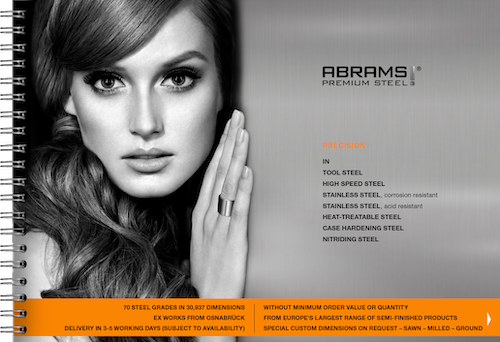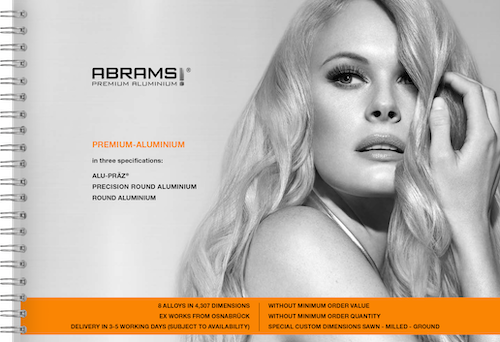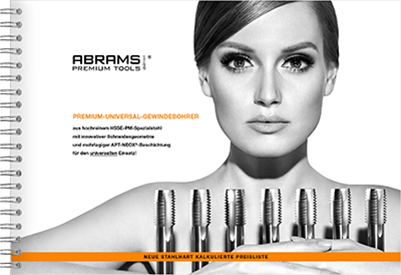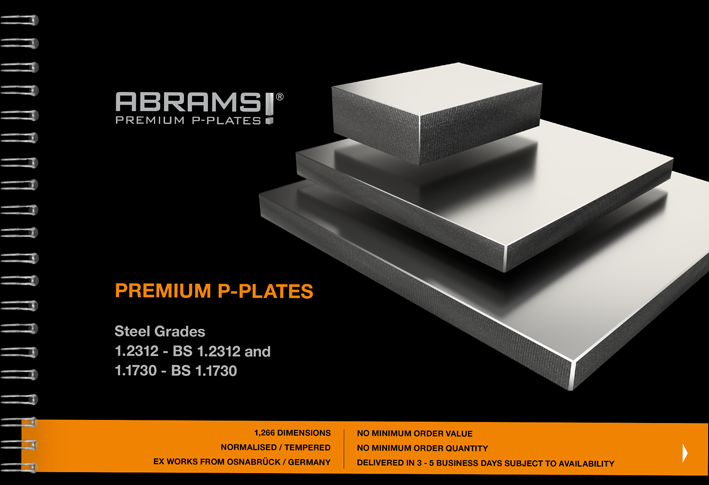What is nitriding steel? The ABRAMS Steel Guide® explains!
Nitriding steels are named so as they can be nitrated when a very high surface hardness needs to be achieved. Nitriding steel is often used for mechanical engineering, due to its superior properties, especially its hardness and wear resistance. The nitriding of steel is done when components need good wear resistance, due to high surface stresses, combined with a ductile core. In contrast to case hardening steel where carbon is diffused into the surface, when nitriding, nitrogen (N) is diffused into the surface.
Nitriding steel is heat-treatable steel (EN 10085, former DIN 17211) that is alloyed with nitrogen absorbent alloys like chromium, vanadium, molybdenum, titanium, or aluminum. These alloys allow the building of finer and very hard nitrides. This gives the steel better mechanical properties.In addition to the standardized nitriding steels, hot-work and high-speed steels (e.g. BS BH11 – 1.2343 – X37CrMoV5-1 and BS BM2 – 1.3343 – HS6-5-2C) as well as case-hardening and heat-treatable steels (e.g. BS 1.2162 – 1.2162 – 21MnCr5 and BS 823 M 30 – 1.6582 – 34CrNiMo6) can also be nitrided.
The relevant components should not be exposed to high surface pressure as the nitriding layer might split away, or pressure damage might occur to the much softer core. We would like to mention here that the higher the added mass fraction of alloys the lower the depth of the nitrogen absorption. In contrast to that, when nitriding unalloyed steel the nitriding layer can be brittle and split off easily.
FAQ - Questions about nitriding steel
What is nitriding?
Nitriding steel is introduced into a nitrogen containing atmosphere and heated, this results in the nitrogen atoms entering the surface of the steel, binding with it, and building a very high surface hardness (up to 1,200 HV). Steels which can be nitrated are so called nitriding steels. Nitriding is a thermochemical surface hardening technic.
The nitriding process is a thermal treatment developed to advance the mechanical properties of the steel, especially the wear resistance and fatigue resistance. In general, the longer the nitriding time the deeper the nitriding layer (for unalloyed and low alloyed steel the depth is up to 0.8 mm, for high alloyed or stainless steels the depth is up to 0.15 mm).
Nitration can be carried out in various media, including gas nitration, salt bath nitration and plasma nitration. Gas nitration uses ammonia as the nitrogen source, while salt bath nitration uses cyanide-containing curing salts. In plasma nitration, nitrogen is ionized by an electrical discharge, which allows efficient nitrogen incorporation. All these methods have their own advantages and disadvantages in terms of cost, control, and environmental impact.
What types of nitriding steel are there?
There are many different types of nitriding steel that can be selected depending on the specific requirements of the application. These include, for example, gas nitriding, vacuum nitriding, plasma nitriding or salt bath nitriding. Nitriding steels have different amounts of carbon, chromium, molybdenum and other elements that influence their mechanical properties. Choosing the right nitriding steel requires careful consideration of the specific requirements of the application, including hardness, wear resistance, toughness and cost.
What advantages has nitriding steel?
Nitriding steel has several valuable properties. First, it has a high surface hardness, which makes it very wear resistant. This makes nitrated steel ideal for applications where a high degree of wear resistance is required, such as gear parts, bearings, and tools.
Secondly, nitriding does not cause deformation or distortion of the component, as it is carried out at temperatures (usually 932 – 968°F) that are below the transformation temperature of the steel. This is a major advantage over other hardening techniques, which can cause significant deformation. It can therefore be finished before hardening.
Third, nitriding improves the fatigue strength of the steel, making it a good choice for components subjected to periodical stresses. Furthermore, nitriding steel is temper resistant up to 932°F due to the thermal stability of the nitrides.
What are the disadvantages of nitriding steel?
Despite its advantages, nitriding steel also has some disadvantages. Nitriding can only be performed on certain steels that contain suitable elements for the formation of nitride phases. Not all steel grades can be successfully nitrated, and the choice of suitable steel can be an important factor in deciding whether to use nitriding.
The scope of application is closely scrutinized in practice, as the production of nitriding steels is very expensive due to the many processing steps involved.
Another disadvantage is the limited penetration depth of nitriding. Nitriding takes place mainly on the surface of the steel and the penetration depth is typically very limited. This means that nitriding steel is not suitable for applications where deeper hardness is required. In addition, nitriding can affect the corrosion resistance of the steel, especially in humid or corrosive environments.
Despite these drawbacks, nitrated steel is an extremely valuable material in the engineering industry. The high surface hardness, wear resistance and fatigue strength achieved by nitriding are often critical to the performance of machine components. Through proper selection and processing of the steel, the advantages of nitriding can be maximized, and the disadvantages minimized.
Where is nitriding steel used?
Nitriding steels are used in a wide range of applications where high wear and fatigue resistance are required. Examples include gears, crankshafts, camshafts, and valves in the automotive industry, as well as tools and molds in plastic processing and metalworking.
Are you looking for a particular nitriding steel and its applications?
All orange highlighted tiles show nitriding steel with an array of properties. With just one click you can view your chosen steel grade.
You are looking for a specific nitriding steel and its properties?
With our patented ABRAMS Steel Guide, you can find an alternative for your steel grade and its properties in no time.
And you can have all the information send, for your convenience, in an E-mail to you.
No registration needed!
Try it now.






















